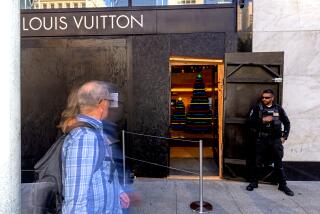Must Reads: California transformed its justice system. But now crime is up, and critics want rollbacks
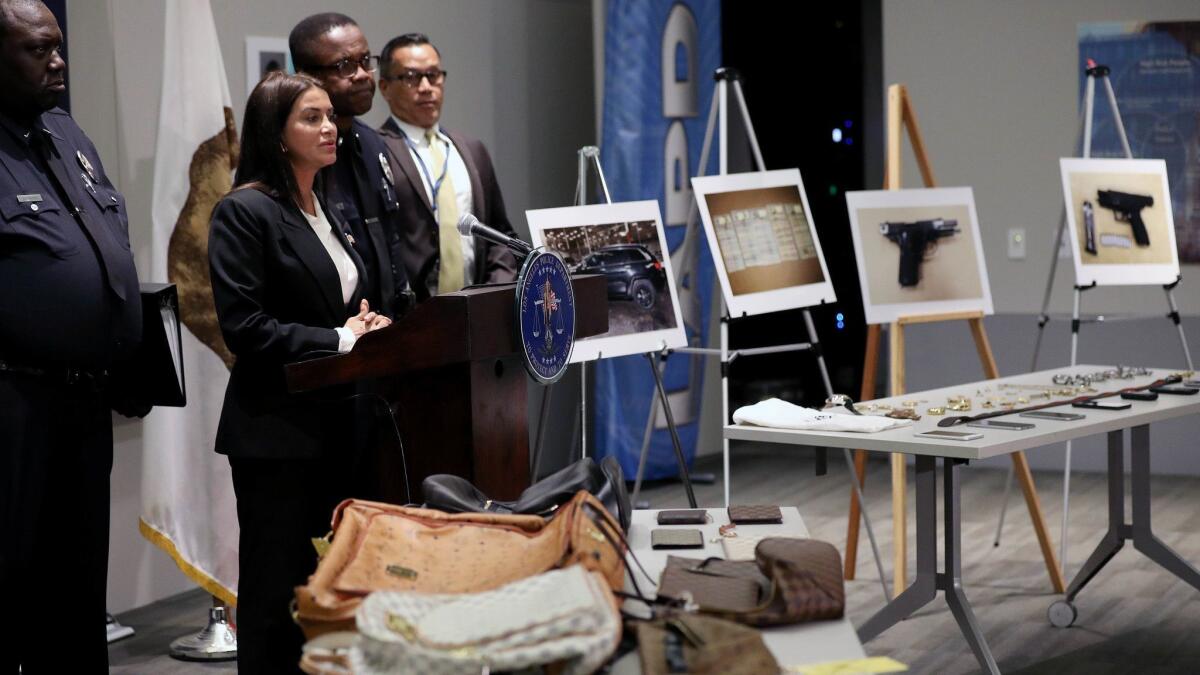
- Share via
Over the last decade, California has led the nation in reducing its prison population.
The state has shortened sentences and diverted some offenders to the counties for incarceration and supervision, transforming California’s criminal justice system into what supporters hope will become a humane model around the country.
But amid the changes, crime has increased in recent years, sparking debate about the causes and giving ammunition to those leading a new effort to roll back some of the reforms.
An analysis by the Marshall Project and the Los Angeles Times found that California’s crime rates remain near historic lows, but overall crime spiked in both 2012 and 2015, the years that immediately followed two major statewide measures aimed at decreasing the number of people in prison. Those jumps were mainly driven by increases in property crimes, particularly thefts from motor vehicles.
After decades of mirroring national downward trends in violent crime, California saw a 12% increase from 2014 to 2017, while the violent crime rate in the other 49 states together increased only 3%, the analysis showed. In 2014, California voters approved a ballot measure that reduced sentences for many low-level drug and property crimes.
California’s property crime rate fell slightly in the last two years, but remains 2% higher than it was in 2014. By contrast, the rate of property crimes in the rest of the nation has dropped by 10% over the same period.
There is no simple explanation.
Crime trends vary dramatically from county to county. Thirty-one of the state’s 58 counties saw an increase in violent crime last year, while 22 saw an increase in property crimes. The rest stayed flat or declined. What single factor can explain the fact that violent crime went up 6% last year in Los Angeles but fell 6% in Sacramento?
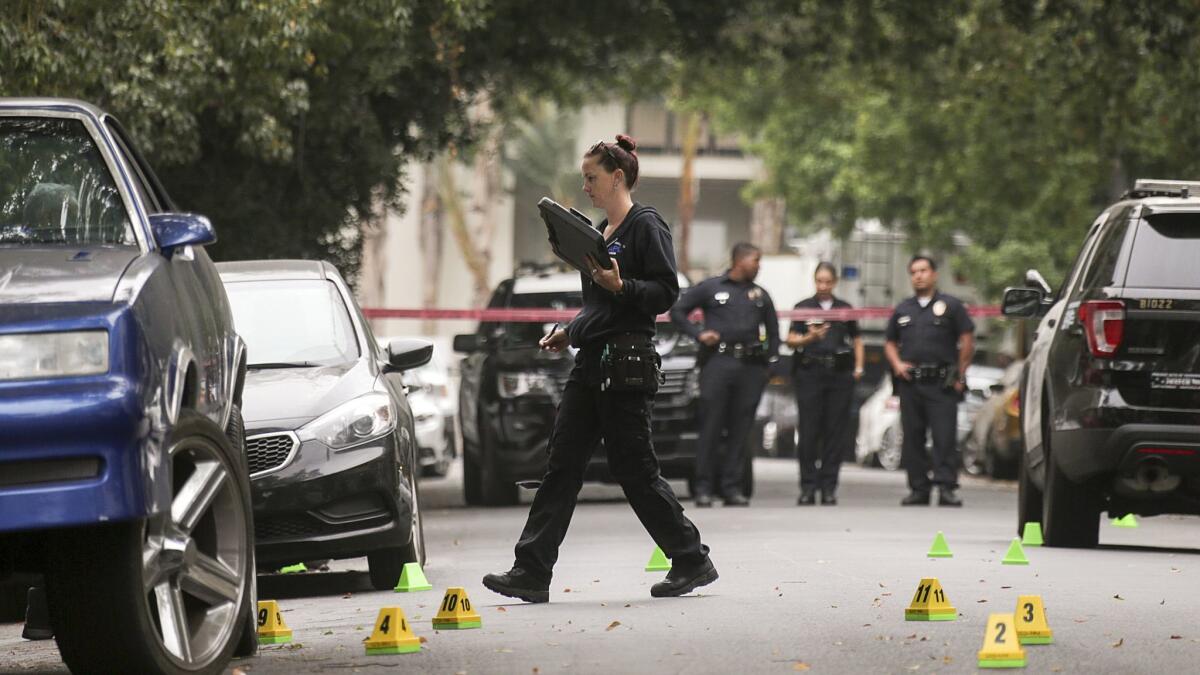
There also have been large differences in the way counties spent the billions in state money allocated to implement the new measures. Some focused on building jails, others on recruiting and deploying police, and still others experimented with collaborative courts and reentry programs.
To complicate matters, specific crimes come with their own caveats. Reports of rape have increased nationally since 2013, for example, but sexual assaults have traditionally been underreported, and part of the increase stems from the FBI’s decision to broaden its definition of rape in 2013. (The Marshall Project and Times data analysis excluded rape.) Reports of aggravated assaults in California also have increased, but part of that increase is likely due to underreporting from 2005 to 2012 by the Los Angeles Police Department.
California’s criminal reform revolution began in earnest in 2011 after the U.S. Supreme Court approved a cap on the number of inmates in prison. Lawmakers responded by passing Assembly Bill 109, known as realignment, which lowered the prison population by shifting the burden to the counties to house and supervise thousands of inmates convicted of crimes that the law categorized as nonviolent and nonserious.
Three years later, California voters approved Proposition 47, which turned drug use and most theft convictions from felonies to misdemeanors. In 2016, voters overhauled the state parole system by backing Proposition 57, which gave thousands of inmates the chance to earn an earlier release from prison.
The undeniable result of all these measures is that people are on the street today who would have been locked up in previous years.
Critics of the reforms argue that they have created a permissive climate that makes policing harder and weakens the deterrent effect of a possible prison sentence.
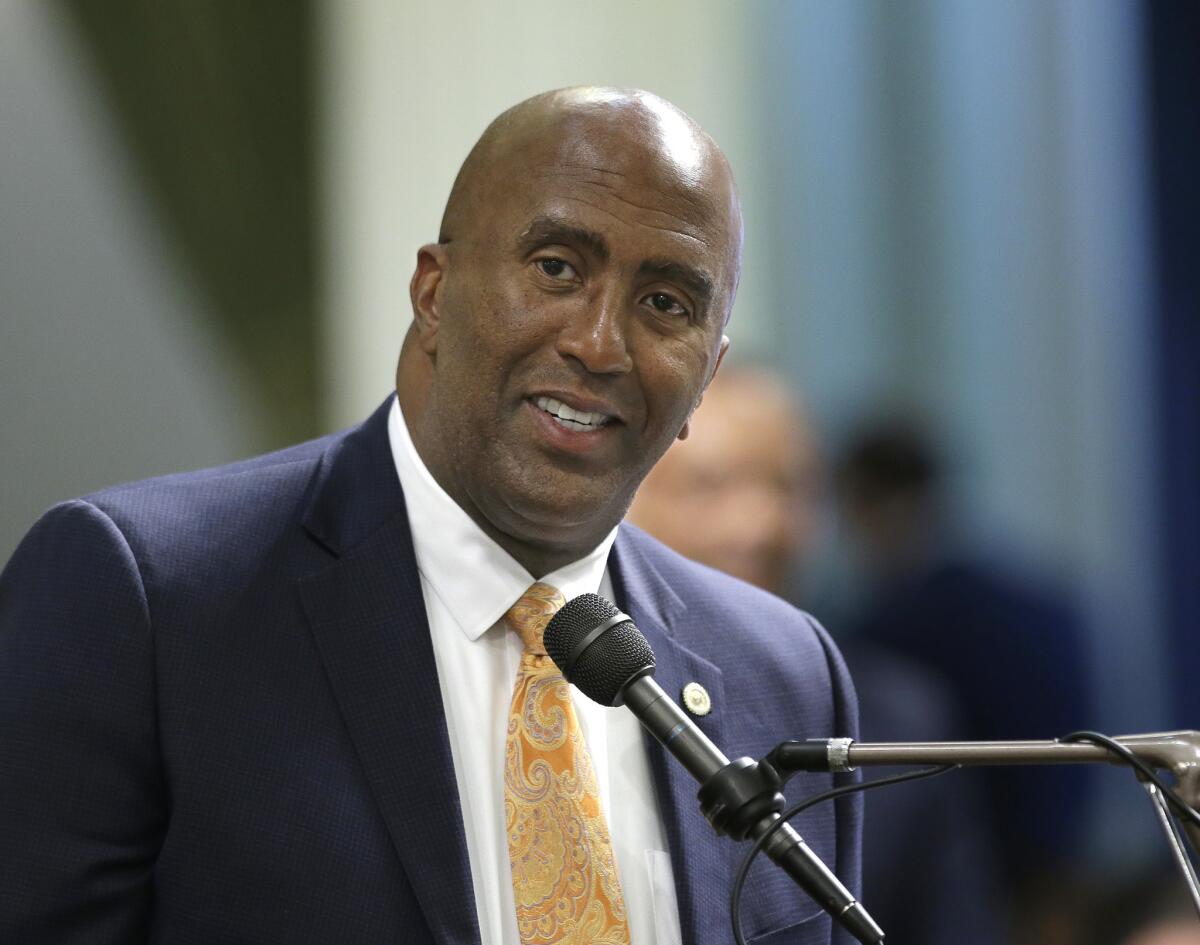
“There’s no accountability,” said Assemblyman Jim Cooper (D-Elk Grove). “People know they can get away with things. That’s contributed to it. That’s really been a big source of frustration. No one’s going to jail anymore.”
Cooper, a retired Sacramento County sheriff’s captain, has been a leading voice in a coalition of prosecutors and law enforcement groups pushing back.
A statewide initiative that will appear on the 2020 ballot would reverse some provisions of Proposition 47, toughen supervision of parolees and disqualify some prisoners from early release.
Backers of the proposed rollback argue that the state’s drug courts, intended as an alternative to criminal courts, are seeing fewer people because prosecutors can no longer force someone into treatment with the threat of a felony. (Some counties, including San Diego, have reported decreases in drug court participation since Proposition 47, but no statewide figures are available.)
Those who favor toughening the law also claim counties are struggling to supervise offenders with violent criminal records.
Supporters of the prison downsizing measures dispute any link between the new laws and an increase in crime. They argue that using 2014 as a baseline — the year with the fewest crimes reported in the state since the 1960s — unfairly skews any analysis.
“To look at it from a year-to-year basis is very short-sighted,” said Michael Romano, the director of the Three Strikes Project at Stanford Law School who helped write Proposition 47. “We really have had a sustained downward trend over the past decade or two.”
He said it’s unlikely any single factor led to an increase in crime, but rather a combination of issues, such as poverty and unemployment, in different counties throughout the state.
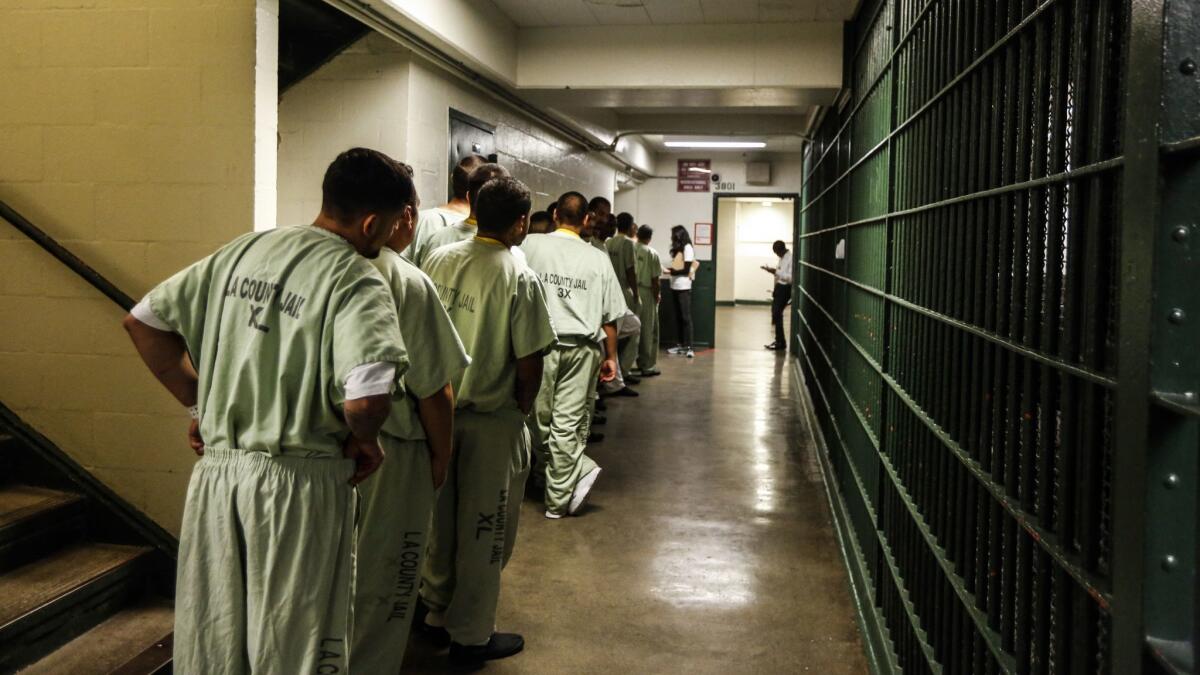
Californians for Safety and Justice, a group that co-authored Proposition 47, points out that several states saw larger increases in violent crime than California from 2016 to 2017. (An analysis by The Times and the Marshall Project found 20 states with larger increases in violent crime rates.) They note that none of the recent laws changed penalties for violent crimes.
In 2013, the nonpartisan Public Policy Institute of California found that the first major prison downsizing law, realignment, had no effect on violent crime, but did lead to an increase in auto thefts. In 2016, a prestigious social science journal reached a similar conclusion.
Under realignment, people convicted of auto theft, a nonviolent felony, usually serve shorter sentences in their local jails and are released under local supervision.
Two studies published this summer — one by a UC Irvine criminologist and another by the Public Policy Institute of California —found no link between Proposition 47 and increases in violent crime. Both noted a possible link between the initiative and increases in larceny, particularly thefts from motor vehicles, although the Irvine study found those links too tenuous to conclude Proposition 47 was to blame.
After national crime data for 2017 released this fall showed California departed from the national trend — violent crime in California ticked up slightly while it fell slightly across the 49 other states taken together — researchers said they planned to revisit the question of a link between Proposition 47 and violent crime. California’s robbery rate jumped 14% from 2014 to 2017; the rest of the country saw a 7% drop.
“It is troubling and deserves more attention,” said Magnus Lofstrom, policy director of corrections at the Public Policy Institute of California.
San Francisco’s struggle with car break-ins illustrates the difficulty of trying to determine if the reforms are linked to changes in local crimes.
Thefts from vehicles nearly tripled in the city from 2011 to 2017, when they hit 29,851.

Weary residents have grown used to the feel of car window glass crunching underfoot. Bob Hinckley estimates he and his wife have seen dozens of break-ins since moving into a home about a year ago near the top of the city’s famously curvy Lombard Street. Brazen thieves target unwitting tourists who leave valuables in plain view. He once saw a suspect drive up onto the sidewalk to avoid the police.
“Why do they come over here to break into cars? Because that’s where the tourists are with their bags,” Hinckley said.
An analysis of break-ins confirmed that these thefts were concentrated near tourist hot spots — a stretch of road near museums in Golden Gate Park, a viewpoint overlooking the Pacific Ocean, a street near the Palace of Fine Arts — or in large, public parking garages.
San Francisco police Lt. Michael Nevin, who until November oversaw car break-in investigations in a district that includes many of the tourist hot spots, said he had noticed a sharp spike before Proposition 47. Nevin said break-ins are often charged as “auto burglary,” which was not affected by the ballot measure. (Auto burglary can be charged as a misdemeanor or a felony.) He said the break-ins are typically committed by organized theft rings that work in groups of two or three.
Asked whether new criminal justice measures have hampered his daily policing work, he said: “Absolutely not.”
The break-ins have become a hot-button issue in San Francisco, particularly because Dist. Atty. George Gascón co-authored Proposition 47.
In September, Suzy Loftus, a former prosecutor who now works as a lawyer for the San Francisco County Sheriff’s Department, announced she would challenge Gascón with a focus on the car break-ins. Shortly after, Gascón announced he would not seek reelection.
Loftus said she supports Proposition 47 and prison downsizing, but says the crime increase shows a failure by San Francisco leaders to adapt to needed criminal justice changes.
“It’s easy to say the changes in our system are causing this. It’s harder to say, ‘Hey, we needed those changes, and we’ve got to work together better locally,’” she said.
Another offense that has become central to the backlash against the new criminal justice measures is shoplifting.
Proposition 47 raised the value of stolen goods necessary to charge a felony from $400 to $950. Retailers complained that organized theft rings were taking advantage of the reduced punishments to steal misdemeanor levels of merchandise.
“It’s gotten far worse in the last few years — there are no consequences,” said Rudy Ruiz, owner of World 1-1 Games, a video game store in a mall about an hour north of Santa Barbara.
Frustrated at how long it would take for police to respond, Ruiz said he began chasing shoplifters and posting their images on social media in an attempt to shame them. On one occasion, he caught a woman slipping an item into her baby stroller.
“I’m not a million-dollar corporation,” he said. “If somebody steals $100, that’s a lot for me.”
Shoplifting soared in many counties in 2015, with Los Angeles and San Bernardino seeing the most dramatic increases. But then it dropped statewide over the next two years, falling to its lowest level in a decade.
To head off a frontal assault on Proposition 47, legislators created a new category of crime, “organized retail theft.” That new law, signed by Gov. Jerry Brown in September, allows prosecutors to charge shoplifting as a felony if two or more people act together to steal.
The bill’s author, Assemblyman Reggie Jones-Sawyer (D-Los Angeles) said its aim was to crack down on organized shoplifting rings without retreating from the reforms or criminalizing people who are stealing because they are hungry, homeless or addicted.
Assemblyman Cooper, the Proposition 47 critic, said it would do little to curb shoplifting because it places too high a burden on prosecutors to prove a conspiracy.
In San Joaquin County, which has long had one of the state’s highest crimes rates, property crimes have fallen by 25% since 2011. In 2017, it saw the lowest number of shoplifting reports in 15 years.
When Eric Jones, chief of police in Stockton, the San Joaquin County seat, first saw the local numbers drop, he worried fewer people were reporting crimes to police. The department double-checked the figures by looking at auto thefts — a crime that’s nearly always reported — to verify their data.
He said he’d been skeptical when realignment and Proposition 47 went into effect.
“I was concerned when those passed about the impact those were going to have on my community,” Jones said. “Would crime go up? And it’s just not that simple. I mean, look at our county — we’ve seen some success.”
This article was published in partnership with the Marshall Project, a nonprofit newsroom that reports on the criminal justice system. Sign up for their newsletter, or follow the Marshall Project on Facebook or Twitter. The Marshall Project receives funding from the California Endowment and other organizations that favor efforts to reform California’s criminal justice system. Under terms of its funding, the Marshall Project has sole editorial control of its news reporting.
More to Read
Sign up for Essential California
The most important California stories and recommendations in your inbox every morning.
You may occasionally receive promotional content from the Los Angeles Times.
